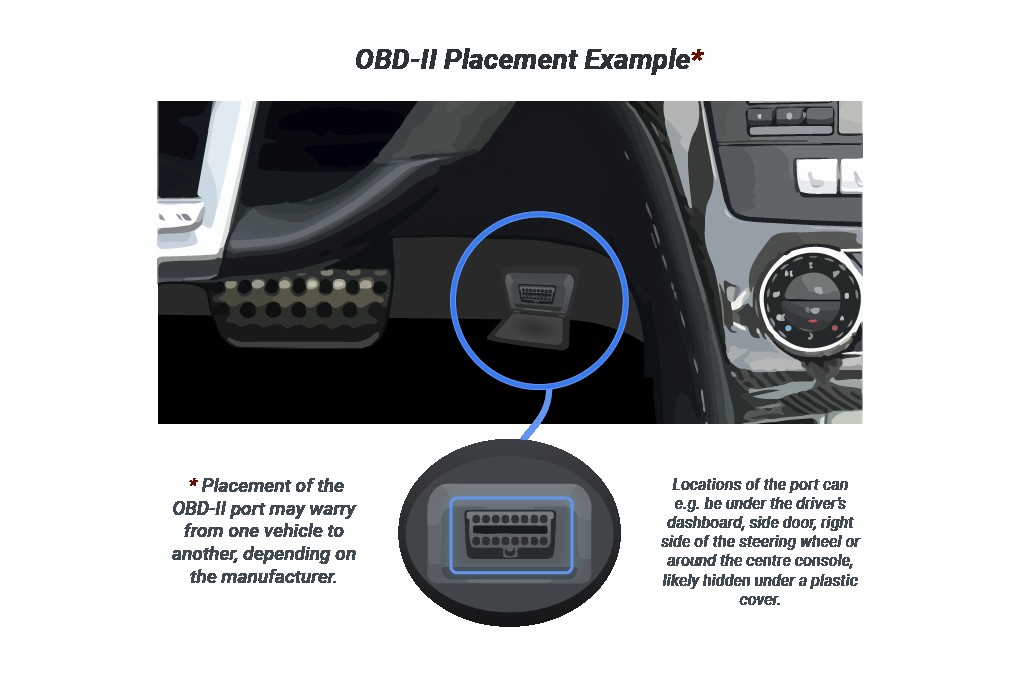The OBD2 port, short for On-Board Diagnostics port, is a crucial component in modern vehicles. It allows mechanics and car owners to access a wealth of information about their car’s performance and diagnose potential issues. But where exactly is this important port located? This article will guide you to find the OBD2 port in your vehicle.
Common OBD2 Port Locations
The OBD2 port is typically located within the driver’s reach, often under the dashboard on the driver’s side. While the exact location can vary depending on the make and model of your vehicle, here are some common spots to check:
- Under the Dashboard: This is the most common location. Look under the steering wheel column, around the knee bolster area, or near the center console.
- Near the Steering Wheel: Sometimes the port is positioned slightly above or below the steering wheel, often hidden by a panel.
- Inside the Glove Compartment: Occasionally, manufacturers place the OBD2 port inside the glove box, either on the back wall or the bottom.
- Near the Fuse Box: The OBD2 port might be located close to the fuse box, often under the dashboard or in the engine compartment.
- Center Console: In some vehicles, especially minivans and SUVs, the OBD2 port can be found within the center console area.
Using Your Vehicle’s Owner’s Manual
The most reliable way to find the OBD2 port in your specific vehicle is to consult your owner’s manual. The manual will usually have a diagram or specific instructions on where to locate the port. It will often be labeled as “OBD,” “OBD II,” or “Diagnostic Connector.”
Online OBD2 Port Locators
If you don’t have your owner’s manual handy, several online resources can help you locate the OBD2 port. Websites and forums dedicated to specific car makes and models often have detailed information and pictures showing the port’s location. Simply search for “OBD2 port location [your car make and model]” to find relevant information.
What Does the OBD2 Port Look Like?
The OBD2 port is a standardized 16-pin connector, usually trapezoidal in shape. It is often covered by a small cap or door to protect it from dust and debris.
Why is Finding the OBD2 Port Important?
Locating the OBD2 port is essential for:
- Vehicle Diagnostics: Mechanics use the port to connect diagnostic scanners and retrieve trouble codes, allowing them to identify and fix problems.
- Emissions Testing: Emissions testing centers use the OBD2 port to check if a vehicle meets emissions standards.
- Performance Monitoring: Car enthusiasts and performance tuners use the port to monitor various engine parameters and make adjustments.
- Insurance and Fleet Management: Devices connected to the OBD2 port can track vehicle data for insurance or fleet management purposes.
Conclusion
Finding the OBD2 port in your vehicle is usually a straightforward process. By checking common locations, consulting your owner’s manual, or using online resources, you should be able to locate the port quickly. Accessing the OBD2 port empowers you to take control of your vehicle’s maintenance and understand its performance better.


